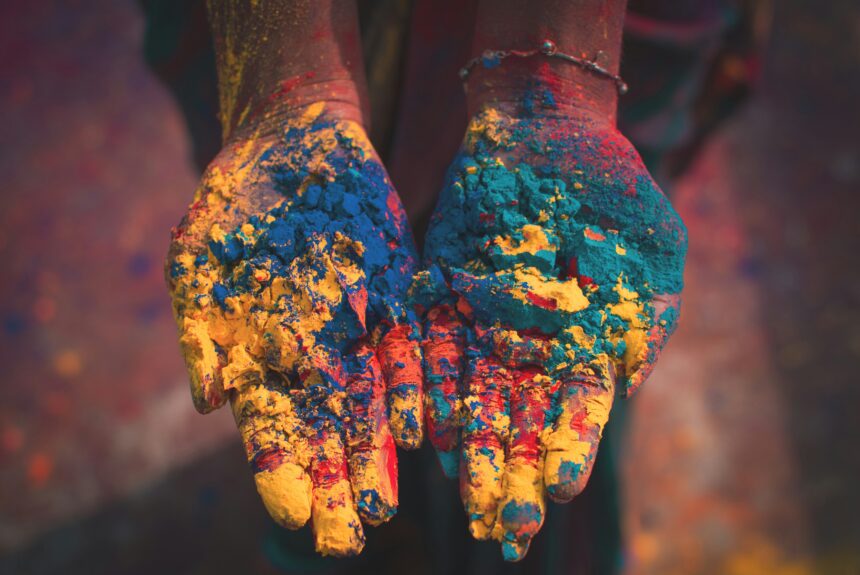Here, we delve into some of the most significant festivals of India, exploring their origins, rituals, and the vibrant celebrations that make them unique.
India, a land of rich cultural heritage and diversity, is renowned for its numerous festivals that reflect the country’s traditions, beliefs, and history. Many travellers seek tickets to India to experience these vibrant festivities firsthand. These festivals, celebrated with immense fervour and enthusiasm, bring people together, transcending boundaries and uniting communities.
Diwali: The Festival of Lights
Diwali, also known as Deepavali, is one of the most prominent festivals in India. Celebrated by Hindus, Sikhs, and Jains, Diwali signifies the victory of light over darkness and good over evil. The festival commemorates the return of Lord Rama to Ayodhya after a 14-year exile, the enlightenment of Mahavira in Jainism, and the Bandi Chhor Divas for Sikhs.
Rituals and Traditions
Diwali celebrations extend over five days, each marked by specific rituals:
- Dhanteras: The first day involves purchasing new items and jewelry, symbolizing prosperity.
- Naraka Chaturdashi: The second day commemorates the victory of Lord Krishna over the demon Narakasura.
- Lakshmi Puja: The third day, the main day of Diwali, is dedicated to the worship of Goddess Lakshmi, the deity of wealth.
- Govardhan Puja: The fourth day celebrates Lord Krishna lifting the Govardhan Hill to protect his devotees.
- Bhai Dooj: The final day honors the bond between brothers and sisters.
Celebrations
Homes are adorned with oil lamps, rangolis, and decorations. Families exchange gifts and sweets, and fireworks light up the night sky. The ambiance is filled with joy and togetherness, making Diwali a truly enchanting festival.
Holi: The Festival of Colors
Holi, celebrated at the onset of spring, is a festival of colors and joy. It marks the victory of good over evil, symbolized by the burning of Holika, the demoness.
Rituals and Traditions
Holi festivities begin with Holika Dahan, a bonfire symbolizing the destruction of evil. The following day, known as Rangwali Holi, is characterized by the playful throwing of colored powders and water.
Celebrations
People from all walks of life come together to celebrate Holi. Streets and public spaces transform into vibrant displays of color. Traditional sweets like gujiya and thandai are savored, and music and dance add to the festive spirit. Holi fosters a sense of community and joy, breaking down social barriers.
Navratri and Durga Puja: Worship of the Divine Feminine
Navratri, a nine-night festival, honors the divine feminine, represented by Goddess Durga. It culminates in Durga Puja, particularly grand in West Bengal.
Rituals and Traditions
Each of the nine nights of Navratri is dedicated to a different form of Goddess Durga. Devotees fast, pray, and participate in traditional dances like Garba and Dandiya. The tenth day, Vijayadashami or Dussehra, marks the victory of good over evil, symbolized by Lord Rama’s victory over Ravana.
Celebrations
Durga Puja involves elaborate decorations, idols of Goddess Durga, cultural performances, and community feasts. The atmosphere is charged with devotion and cultural pride, making it a major highlight of the Indian festive calendar.
Eid-ul-Fitr: The Festival of Breaking the Fast
Eid-ul-Fitr, celebrated by Muslims worldwide, marks the end of Ramadan, the holy month of fasting. It is a time of gratitude, charity, and community.
Rituals and Traditions
Eid begins with a special prayer, Salat al-Eid, at mosques. It is customary to give Zakat al-Fitr, a form of charity, ensuring that even the less fortunate can partake in the celebrations.
Celebrations
Families gather for festive meals, often including dishes like biryani, kebabs, and sweets like sheer khurma. New clothes are worn, and gifts are exchanged. The day is spent visiting friends and relatives, strengthening social bonds.
Ganesh Chaturthi: The Birth of the Elephant-Headed God
Ganesh Chaturthi celebrates the birth of Lord Ganesha, the remover of obstacles and the god of beginnings. The festival is especially grand in Maharashtra.
Rituals and Traditions
Clay idols of Ganesha are installed in homes and public pandals. Over ten days, devotees perform aarti, sing hymns, and offer sweets like modak, believed to be Ganesha’s favorite.
Celebrations
The festival concludes with the immersion of the idols in water bodies, symbolizing the cycle of birth and death. The immersion processions are accompanied by music, dance, and chants of “Ganapati Bappa Morya,” creating an electrifying atmosphere.
Pongal: The Harvest Festival of Tamil Nadu
Pongal, a four-day harvest festival, is celebrated with great enthusiasm in Tamil Nadu. It marks the beginning of the sun’s northward journey, known as Uttarayan.
Rituals and Traditions
Each day of Pongal has its significance:
- Bhogi: The first day involves discarding old belongings and welcoming new ones.
- Thai Pongal: The second day is the main festival day, where rice is cooked with milk and jaggery, and offered to the Sun God.
- Mattu Pongal: The third day is dedicated to cattle, acknowledging their role in agriculture.
- Kaanum Pongal: The final day is for socializing and family gatherings.
Celebrations
Homes are decorated with kolams (rangoli), and traditional dishes like ven pongal and sweet pongal are prepared. The festival is a celebration of gratitude towards nature and agricultural abundance.
Baisakhi: The Harvest Festival of Punjab
Baisakhi, celebrated in Punjab, marks the harvest of Rabi crops and the formation of the Khalsa in Sikhism.
Rituals and Traditions
The day begins with prayers at Gurdwaras, followed by Nagar Kirtans, where the holy Guru Granth Sahib is paraded through the streets. The ritual of Amrit Sanchar (baptism) is also performed.
Celebrations
Baisakhi fairs are organized, featuring traditional music, dance (Bhangra and Gidda), and food. It is a day of community celebration, reflecting the region’s agricultural prosperity and cultural heritage.
Christmas: The Birth of Jesus Christ
Christmas, celebrated by Christians worldwide, commemorates the birth of Jesus Christ. It is a festival of joy, love, and giving.
Rituals and Traditions
The celebrations begin with a midnight mass on Christmas Eve. Homes and churches are decorated with Christmas trees, lights, and nativity scenes. Carol singing and gift exchanges are integral to the festivities.
Celebrations
Christmas feasts feature dishes like roast turkey, plum cake, and other traditional delicacies. The festival brings families together, fostering a spirit of warmth and generosity.
Onam: The Harvest Festival of Kerala
Onam, celebrated in Kerala, marks the homecoming of the mythical King Mahabali. It is a ten-day festival of joy and prosperity.
Rituals and Traditions
The festivities include the creation of intricate Pookalams (floral rangolis), Vallam Kali (snake boat races), and traditional dances like Thiruvathira.
Celebrations
The Onam Sadya, a grand feast served on banana leaves, is a highlight. It includes a variety of vegetarian dishes, showcasing Kerala’s culinary heritage. The festival embodies the spirit of inclusivity and cultural richness.
Conclusion
The festivals of India are a testament to the country’s cultural diversity and unity. Each festival, with its unique customs and celebrations, contributes to the rich tapestry of Indian heritage. These joyous occasions bring people together, reinforcing social bonds and fostering a sense of community.
Image: Unsplash, Debashis RC Biswas


